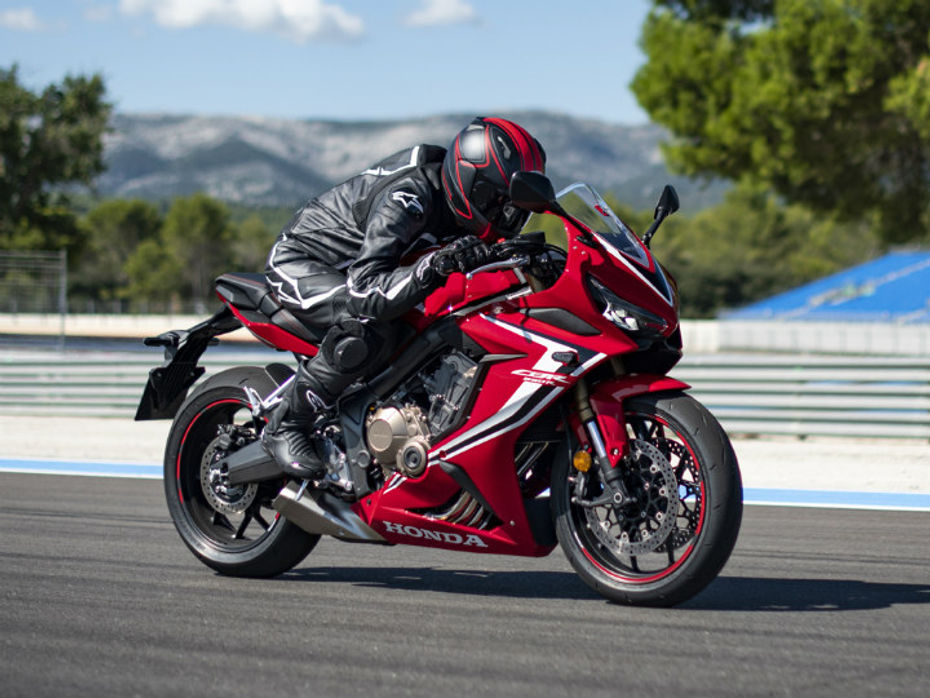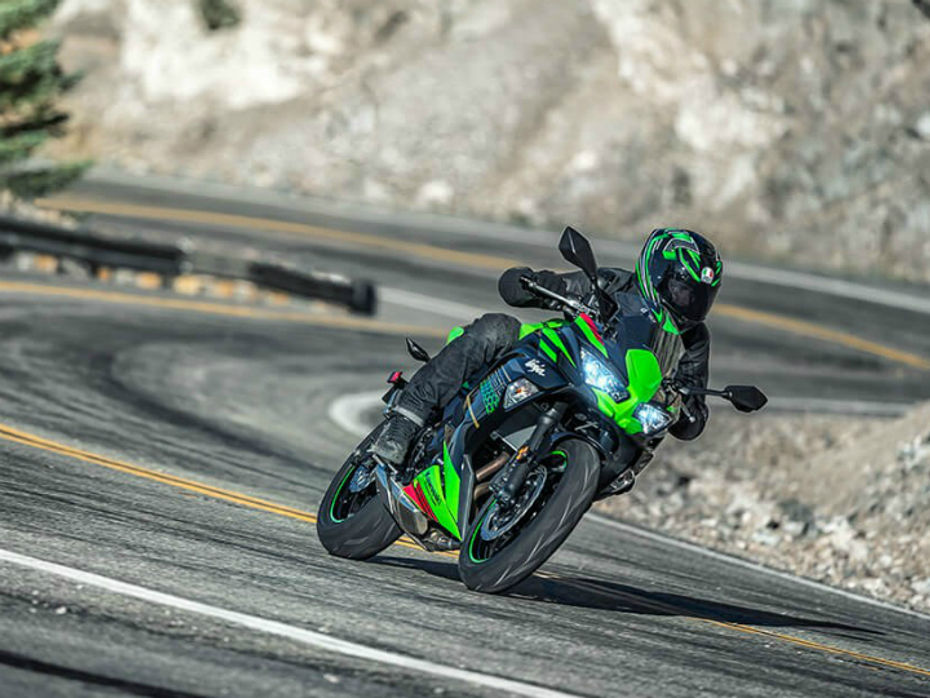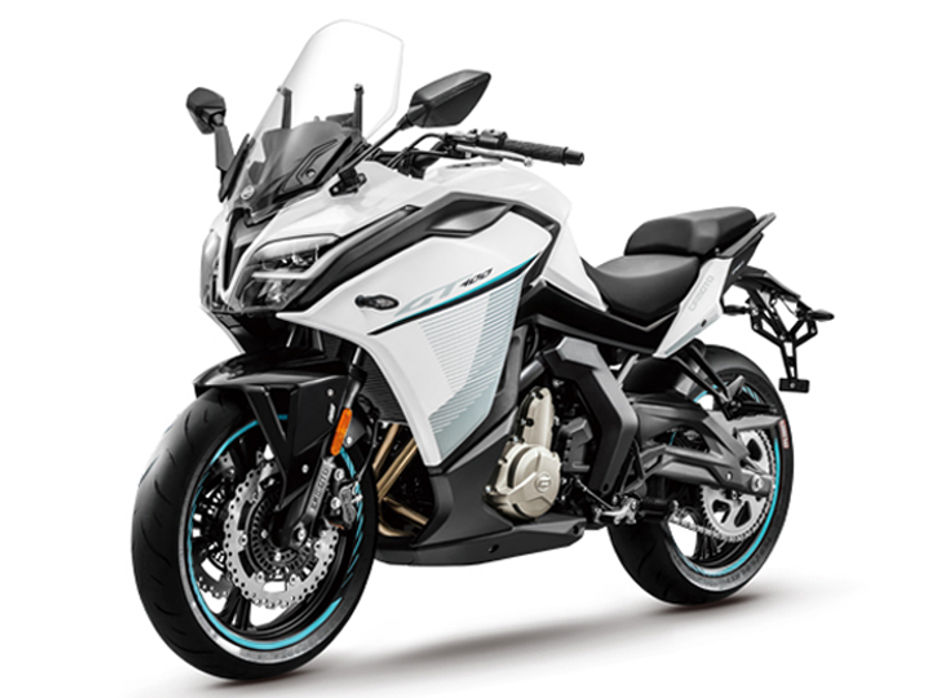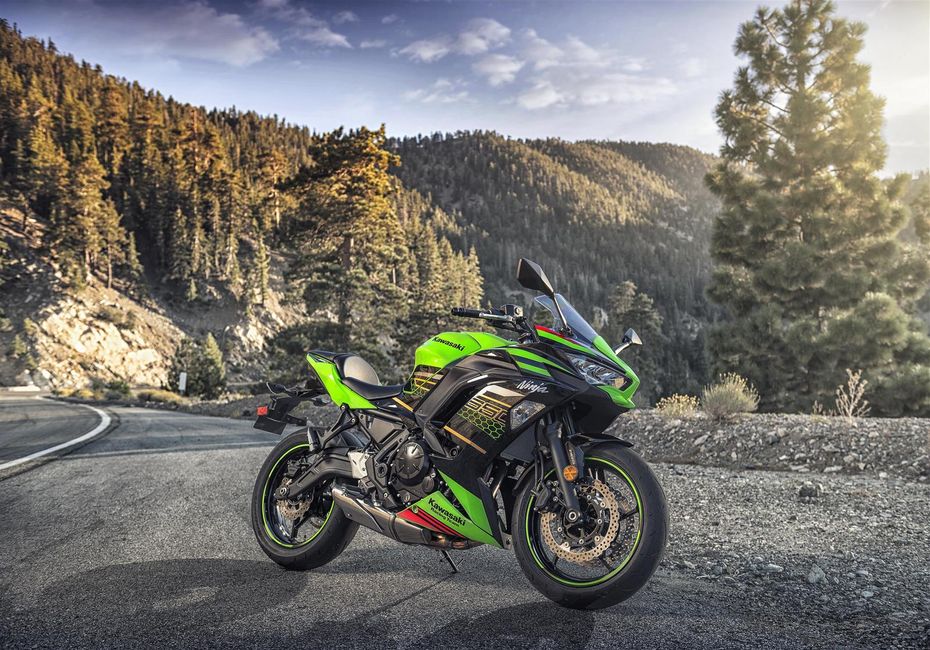
Kawasaki To Go Green WIth BS6 Ninja 650
- May 1, 2020
- Views : 6688


As far as the Indian two-wheeler market is concerned, one of the most important motorcycles that put the spotlight on the 650cc middleweight segment is the Kawasaki Ninja 650. The latest avatar of the bike has been launched abroad and it is only a matter of time until it makes its way to our shores. Interestingly, this segment also witnessed two new entrants in India: Honda CBR650R and CFMoto 650 GT and incidentally, these are the only two rivals that go up against the new Ninja. Here’s how the new Ninja 650 performs against its rivals on paper:
Powertrain:
|
Specifications |
2020 Kawasaki Ninja 650 |
Honda CBR650R |
CFMoto 650 GT |
|
Engine |
649cc parallel-twin liquid-cooled engine |
648.72cc inline four-cylinder liquid-cooled engine |
649.3cc parallel-twin liquid-cooled engine |
|
Peak power |
68PS at 8000rpm |
88.3PS at 11500rpm |
62.5PS at 9000rpm |
|
Maximum torque |
64Nm at 6700rpm |
60.1Nm at 8000rpm |
58.5Nm at 7000rpm |
|
Transmission |
6-speed with assist and slipper clutch |
6-speed transmission with assist and slipper clutch |
6-speed transmission |
|
Kerb weight |
193kg |
210kg |
226kg |
Compared to its previous iteration, the new Ninja makes the same amount of power but the peak torque has gone down from 65.7Nm to 64Nm. Also, the torque output is produced at 6700rpm, which is 200rpm later than the previous generation engine. This could be due to emission constraints but there’s no official word on the matter yet.

The CBR650R, on the other hand, packs a proper inline-four-cylinder motor, which should offer more visceral power delivery, in theory, thanks to the two extra cylinders. It is also equipped with traction control whereas the other two motorcycles are devoid of any electronic nannies apart from the dual-channel ABS.
As far as brisk dynamics are concerned, the Ninja seems to have the upper hand on paper as it is the lightest among its rivals and is a whole 17 kilos lighter than the Honda! CFMoto seems to have made the 650 GT’s motor a bit more laidback than its competitors, which isn’t surprising because Grand Touring is in the bike’s name itself.
Underpinnings:
|
Specifications |
2020 Kawasaki Ninja 650 |
Honda CBR650R |
CFMoto 650 GT |
|
Front suspension |
41mm telescopic fork |
41mm Showa separate function adjustable inverted fork |
38mm KYB telescopic fork |
|
Rear suspension |
Linked monoshock with preload adjustability |
Pro-link monoshock |
Monoshock |
|
Front brake |
Dual 300mm petal discs with axial calipers and dual-channel ABS |
Dual 310mm discs with radial calipers and dual-channel ABS |
Dual petal discs with J.Juan axial calipers and dual-channel ABS |
|
Rear brake |
220mm petal disc |
240mm disc |
Petal disc |
|
Front tyre |
120/70 ZR17 |
120/70 ZR17 |
120/70 ZR17 |
|
Rear tyre |
160/60 ZR17 |
180/55 ZR17 |
160/60 ZR17 |
The Honda CBR650R has the most sophisticated suspension among the lot and coupled with the bigger front and rear brakes it should offer better agility, theoretically. However, the CBR650R retains the Dunlop SportMax tyres of the CBR650F on both ends. And this rubber didn’t exactly inspire confidence while cornering, so it remains to be seen how the rubber makes the newer bike behave on the road in real-time.

The Ninja gets new Dunlop Sportmax Roadsport 2 rubber, which replaces the Dunlop Sportmax D214 tyres. It is claimed to offer quicker warm-up time, better grip, and stability under braking. The CFMoto 650 GT rides on CST Adreno Sport tyres on both ends. It is shared with the 650NK, and we found out that it can hold on its own when it comes to cornering hard. Expect the same from the 650 GT as well. However, with the added touring-friendly bits in the 650 GT, only a road test will answer our questions.
Dimensions:

the automobile community
|
Specifications |
2020 Kawasaki Ninja 650 |
Honda CBR650R |
CFMoto 650 GT |
|
L x W x H |
2,055 x 740 x 1,145 mm |
2135 mm x 749 mm x 1149 mm |
2100 x 930 x 1340 mm |
|
Wheelbase |
1,410mm |
1,449mm |
1415mm |
|
Ground clearance |
130mm |
132mm |
150mm |
|
Fuel tank capacity |
15 litres |
15.4 litres |
19 litres |
|
Seat height |
790mm |
810mm |
795mm |
The 650 GT’s touring genes are apparent in its size too. It also offers the biggest fuel tank capacity and interestingly, the highest ground clearance as well! The bike also packs a reasonably accessible seat height, which should make life easier for shorter riders. Overall, all these aspects make it an ideal touring machine among the three for Indian road conditions—at least on paper.
Pricing:

The 2020 Kawasaki Ninja 650 is sold abroad for USD 7,399 (around Rs 5.25 lakh). The delta between the older-generation Ninja 650 sold abroad and the current-gen India-spec Ninja 650 is around Rs 17,000. So, expect the 2020 Kawasaki Ninja 650 to cost around Rs 5.4 lakh (ex-showroom). For Rs 7.70 lakh (ex-showroom India), the Honda CBR650R is the most expensive among the lot, even though it arrives on our shores via the CKD route. The CFMoto 650 GT seems to offer great value for money considering its Rs 5.49 lakh price tag. This makes it Rs 40,000 more affordable than the current-gen Ninja 650 sold in India.
Overall, the Honda CBR650R appears to be the sportiest of the lot but comes at a hefty price. If you’re looking for a good balance of performance and touring characteristics, the Ninja 650 is a good option spec-wise. But if you’re a hardcore touring enthusiast, the CFMoto 650 GT ticks all the right boxes.

Kawasaki To Go Green WIth BS6 Ninja 650

All The Juicy Details About The Kawasaki Z H2

The Kawasaki Z900 Finally Gets Electronic Nannies With The 2020...

The 2020 Kawasaki Z650 Gets A Sharper Face And Is Geek-friendly Too!

2020 Kawasaki Ninja 650: What’s Different?

Kawasaki Launches 2019 Ninja 650 In Black

Kawasaki Ninja 650 Launched In Blue Shade

Kawasaki Ninja 650 KRT Edition Launched

Bajaj Auto And Kawasaki India To End Alliance From April 1, 2017
 Kawasaki Ninja 300
Kawasaki Ninja 300
India's largest automotive community
 Kawasaki Ninja zx 10r
Rs. 16.79 Lakh
Kawasaki Ninja zx 10r
Rs. 16.79 Lakh
 Kawasaki Ninja H2
Rs. 79.90 Lakh
Kawasaki Ninja H2
Rs. 79.90 Lakh
 Kawasaki Z900
Rs. 9.38 Lakh
Kawasaki Z900
Rs. 9.38 Lakh
 Kawasaki Ninja 300
Rs. 3.43 Lakh
Kawasaki Ninja 300
Rs. 3.43 Lakh
 Kawasaki Ninja ZX-6R
Rs. 11.20 Lakh
Kawasaki Ninja ZX-6R
Rs. 11.20 Lakh